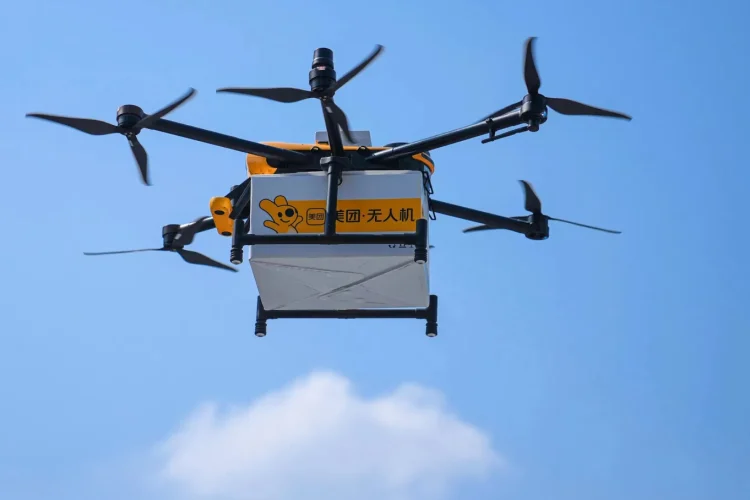China’s low-altitude economy is expanding with drones and eVTOL
Posted: 13 September 2024 | Gabriel Higgins | No comments yet
Tourists along some parts of the Great Wall of China can now receive food and other supplies via drones, as China’s low-altitude economy expands.


Credit: Meituan
China’s low-aviation economy is expanding with drones and eVTOL increasingly being utilised in the nation’s economy. Currently, more than 225,000 people have acquired the license for unmanned aircraft and qualified as drone operators. By definition, the low-altitude economy refers to an economic model that features industrial integration driven by low-altitude aviation. Traditional-style general aviation and the newly derived unmanned aircraft industry are both examples of low-altitude economy. In, 2021 the low-altitude economy was incorporated into China’s national plan.
How is low-aviation being used in China?
Tourists along the Beijing Badaling Great Wall can now enjoy this near-magic experience thanks to the first normalised drone delivery route that was recently opened. The landing spot for this route is set at the South Nine Towers area of Badaling. Before the advent of this new service, not a single stall or vending machine was set up there in order to keep the original state of the place, and visitors had to walk for almost half an hour to buy food or drinks. Now, with delivery drones in operation, consumers can enjoy such provisions much easier and faster.
Yan Yan, Public Affairs Director, of drone company Meituan, explained medical opportunities from drones: “Through drone delivery, we may cover a route that takes 50 minutes on foot in five minutes, and deliver heat relief items and emergency supplies to visitors.”
Free webinar – The future of asset management in global aviation
15 January, 2026, 02:00PM GMT
Join this virtual panel to hear from some of the AtkinsRéalis and aviation sector experts as we discuss how asset management is changing and the impact it will have on the future operations of airports throughout the world.
What economic activity has low-aviation brought?
Low-altitude economy has received strong support in China, and the construction of the infrastructure and service guarantee systems for the low-altitude economy has accelerated, which in turn fuelled investment, and gave birth to new business models like low-altitude logistics, low-altitude agriculture, and low-altitude tourism. According to estimates, the volume of China’s low-altitude economy exceeded 500bn RMB in 2023, and the number is expected to grow to more than two trillion RMB in 2030.
In the past years, many emerging industries have evolved into new growth drivers in China’s economy. Looking into it, a vital impetus lies in the in-depth integration between technological and industrial innovation that relies on the rather complete industrial system and the huge market China boasts. The process is well exemplified by the development of the low-altitude economy, which is also a reflection of how China develops new quality productive forces and drives the high-quality development of its economy.
WATCH NOW ON DEMAND: Enabling checkpoint flexibility with responsible open architecture
Join us for an essential virtual panel supported by Smiths Detection. We will explore how airports can overcome the challenge of mixed vendor systems by adopting a flexible, open approach to checkpoint technology.
This session offers a focused look into achieving efficiency, agility, and future-readiness.
Key learning points
- Understand what to ask during procurement to ensure long-term flexibility and avoid vendor lock-in.
- Learn how centralised image review and flexible algorithm use can help you get more from the technology you already own.
- Strategies to make mixed vendor screening systems work together to improve checkpoint performance and reduce costs.
- See examples of collaborative deployments and the operational agility they enabled.
Register now for expert insights from Los Angeles World Airports, Dutch Ministry of Justice and Security, and Smiths Detection!
Related topics
Aircraft, Drones, Economy, Food and Beverage (F&B), Innovation

















